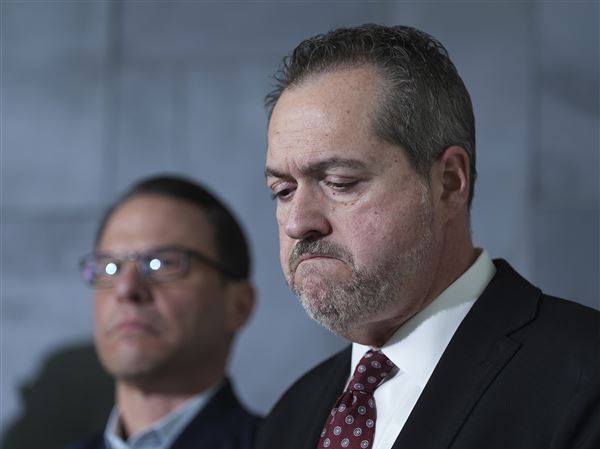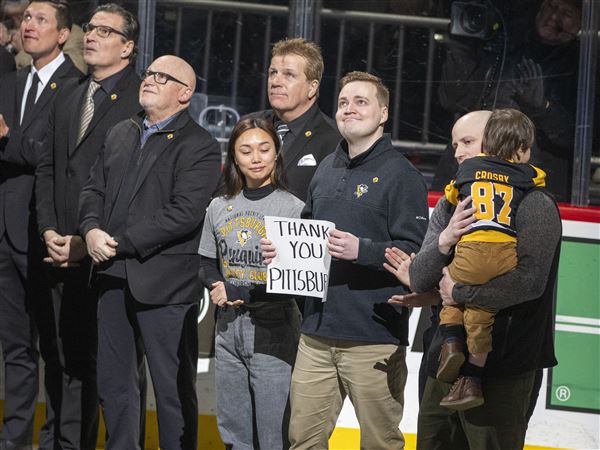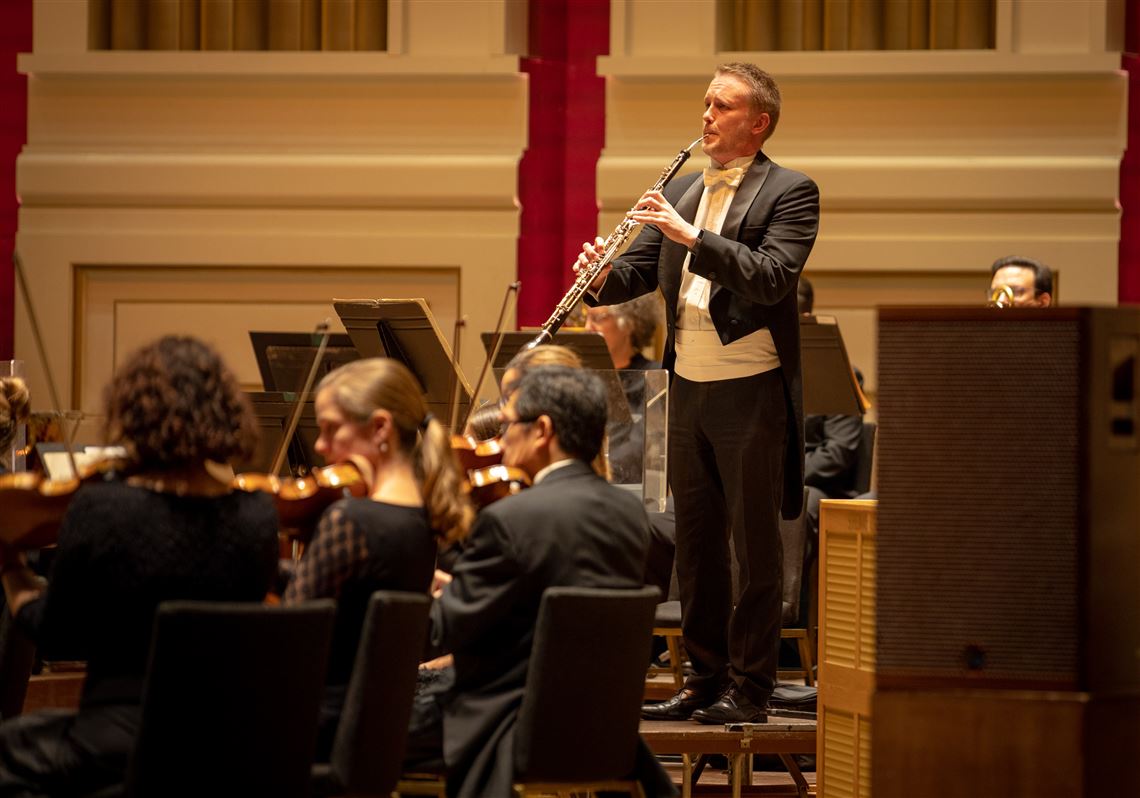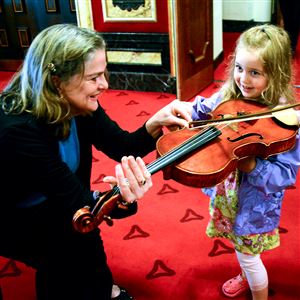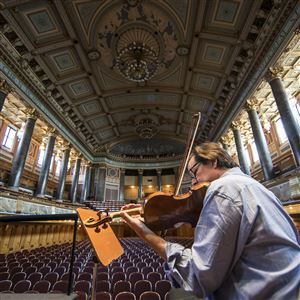Time to dust off the old flute and blow a few trills — the Pittsburgh Symphony Orchestra is seeking some new musicians.
Those who land a job at one of America's top orchestras receive a base salary of over $100,000, a flexible schedule and the kind of joy that only comes from making music for a living.
Sound enticing? Not so fast. There are some hoops to hop through first.
“It's an unbelievably ... neurotic ... hiring process," said English horn player Kyle Mustain, one of the orchestra's newest members.
To win a job at an orchestra like the PSO, musicians first complete years of private study, train at top conservatories and colleges and, in many cases, work with smaller, lower-paid orchestras to build their resumes. Then they must compete against hundreds of other similarly trained candidates, often for just a single spot.
Appointed the orchestra's principal English horn player in 2019, Mr. Mustain, who recently purchased a house in Lawrenceville, described orchestral auditions as “all-out war.”
Once musicians win a job at an orchestra of this quality, they are typically set for a long and fulfilling career at the same ensemble, with time to teach privately or at local universities on the side or perform with other smaller ensembles to build a rounded professional life.
Still, the odds of achieving that happily-ever-after are dismally low.
Help wanted
At the Pittsburgh Symphony Orchestra, there are currently 13 openings in the violin, viola, bass, flute and percussion sections, a high number of openings for the roughly 100-member ensemble. Under the current collective bargaining agreement, 10 of these positions will be filled.
“Every player, principal or assistant or section has an essential role,” said Manfred Honeck, the orchestra’s music director.
While there is turnover every year due to retirements or the occasional transfer to another orchestra, the COVID-19 pandemic caused the PSO to lose a year of auditions and created a backlog. The orchestra will fill the positions with substitute players on a per-concert basis until the spots are filled, a process that will take multiple seasons.
“There's this generational shift happening in orchestras around the country,” said Melia Tourangeau, the orchestra's president and CEO, explaining that many orchestras became full time in the 1970s and many musicians from that first generation are now retiring.
The process begins with a posting in the national American Federation of Musicians bulletin of open positions at least eight weeks before an audition can be scheduled. The trial must also be scheduled on one of the 12 or so weeks when the orchestra’s music director is in town.
“If I were to find out someone was leaving the orchestra today, it would probably take 6-8 months to schedule an audition," said Beth Paine, the orchestra's director of personnel.
Once the job is posted, hundreds of musicians apply through an online portal. Some are invited to the preliminary round, others are asked to submit a recording if their work history isn't deemed extensive enough. Some are invited straight to the semifinal round.
Many, if not most, are rejected.
Practice, practice
Candidates next work to prepare a list of 10-20 musical excerpts, or short clips from orchestral works, to showcase their skills. These are selected by the orchestra, which appoints a small committee of musicians to oversee each audition. They are different for each audition.
“You don't know which of these you'll be asked to play ahead of time, so you have to be ready to play any of them even though you rarely play all of them,” Mr. Mustain said.
Musicians put months and hundreds of hours of intensive practice into these excerpts, each of which may last less than a minute.
“There's this huge mental and psychological pressure in addition to the practicing,” Mr. Mustain said. “You spend hundreds of hours preparing and then pay money to travel to a different city and rent a car and stay a few days.”
It's not unusual for musicians to spend tens of thousands of dollars on auditions before winning their first job, taking several auditions in a year while working other jobs to make ends meet.
Audition day
When the time comes, Ms. Paine said the committee will typically hear several dozen candidates in person over the course of a day or two for the preliminary rounds. They perform behind a screen to protect anonymity in the first round and to avoid any speculation of bias. This first round lasts only a few minutes for each candidate.
While the number of candidates for each position varies by instrument and scheduling, “quantity of candidates doesn't always relate to quality of candidates,” Ms. Paine said.
The committee then pares these down to a top few candidates for a semifinal round. Everyone who did not make the cut has sacrificed significant amounts of time and money to play only a few minutes behind a screen before being sent home.
It can be soul-crushing.
Penny Brill, a former violist with the Pittsburgh Symphony Orchestra, retired in April after 42 years with the ensemble. She worked to improve the audition process throughout her tenure.
“Even now, it's totally based on how someone plays on that particular day and in that particular moment and to hell with anything else,” she said.
Principal cellist Anne Martindale Williams, who was been with the orchestra since 1976, said that even a successful audition may not be enough to move on to the semifinals. If a candidate’s personality isn't the right fit for the orchestra, he or she can be disqualified. Ms. Williams said she tries to get a sense of a player’s disposition during a tryout.
“Personality is as important as how they play,” she said.
After semifinals, the final round of an orchestral audition can include anywhere from two to 10 musicians. For a role that has solo potential, like principal viola or associate principal flute, the top candidates are often invited to play a week with the orchestra before the committee makes its decision. The orchestra pays for travel and compensates the applicant.
Sometimes, even at the end of this monthslong process, no musician is hired.
“Every open seat is a challenge and an opportunity,” Mr. Honeck said. “We’ve seen fantastic players from a technical standpoint who we could immediately hire, but they must also be tested for their leadership skills and personality in a rehearsal.”
Artistic quality
If an offer is made, the player takes a probationary, yearlong position with the orchestra. This is the home stretch. A tenure offer can be extended in the player's second season, and it's very rare for a player at this stage not to earn tenure. Once they do, that player is set for life.
“When a musician gets tenure, they're in that position another 25 years or more,” Ms. Tourangeau said. “That's why the tenure process is so difficult and takes as long as it does.”
Some of the orchestra's open positions have gone unfilled for multiple seasons despite repeated auditions. “No hire” auditions, which occasionally happen at orchestras around the country, are frustrating for both applicants and the orchestra, given the difficulty of scheduling auditions.
The concertmaster role at the Pittsburgh Symphony Orchestra, one of the most important leaderships positions, has gone unfilled for six seasons now.
Concertmaster is one of the most expensive roles to fill. Ms. Tourangeau said that while the orchestra technically saves money by leaving the position unfilled, the administrative side has no say over whether roles are filled.
“There certainly have been savings, but that's not the goal — it's up to the artistic side to find someone,” she said.
“There's high artistic standards that must be met. The musicians and Manfred are willing to not hire — for any position — rather than hire someone who doesn't meet that standard.”
Jeremy Reynolds: jreynolds@post-gazette.com or 412-263-1634; Twitter: @Reynolds_PG. His work at the Post-Gazette is supported by a grant from the San Francisco Conservatory of Music, Getty Foundation and Rubin Institute.
First Published: August 3, 2021, 10:00 a.m.
Updated: August 3, 2021, 10:10 a.m.
